Fuzhou
cctv.com 04-19-2004 14:34

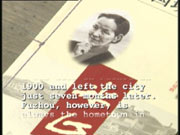
"I was born in Fuzhou in 1900 and left the city just seven months later. Fuzhou, however, is always the hometown in my heart for it was the hometown of my parents..."
This was an article written by Bingxin, a famous Chinese writer, about her hometown Fuzhou. She wrote the article almost fifty years later after she moved out. So what is it about this city that's so unforgettable? Of course, after almost a century, Fuzhou can no longer be the same Fuzhou as in Bingxin's memory.
The coastal location made it one of the first batches of cities in China to benefit from the opening and reform policy. Like in many other cities in the country, nothing can stop the rage of economic growth here.
The capital city of Fujian province in southeast China, Fuzhou boasts a history of around 2,000 years. The city is blessed with mild sub-tropical marine climate, and fantastic resources such as hot springs and seafood.
Fuzhou may not be the hottest travel destination in china, but even in ancient times, it was already a major gateway to the outside world. Therefore, despite valuing a rich Chinese tradition, the people of Fujian are known for their nomadic tendencies. Today, over 2.5 million overseas Chinese trace their roots back to Fujian.
In the heart of downtown Fuzhou, instead of skyscrapers, you will find a huge area of ancient residential buildings, which is a rarity in modern Chinese cities. This area is known as Sanfang-qixiang, namely, three lanes and seven alleys - a critical symbol of Fuzhou as a historic city.
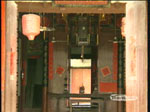


Everywhere you touch upon is history in Sanfang-qixiang. For example, look at this wall. It's all built with huge bricks and you cannot find it anywhere in modern houses. And check this wall, this is even older, this was built probably in Ming Dynasty, rammed earth. And if you look closely, you can find seashells, a lot of seashells, because this is a coastal city, they got the material from seaside.
Covering an area of about 40 hectares, Sanfang-qixiang is praised by many architects as the museum of architecture in the Ming and Qing Dynasties.It is said the layout of the lanes and alleys was formed even earlier back in Tang and Song dynasties almost 1000 years ago.
Around a hundred houses built in Ming and Qing dynasties are still in existence. Although, many are in derelict situation.
Most of the houses were built by well-off people such as officials or businessmen at the time. The exquisite wood carvings, stone carvings, and opulent details all testify to the past glory.
This area used to be the upscale neighborhood of Fuzhou early 20th century. It nurtured many eminent scholars and politicians of the Chinese contemporary history, such as Mr. Yanfu, who introduced the modern western thoughts into China.
Strolling in Sanfang-qixiang is like taking the time machine back to last century. While younger generation just can't wait to move out to enjoy the modern luxury; for older people, their spiritual root is deeply set in this community, and they can find the best pastime here too.
Once a week, retirees put on local opera performance in one of the old houses.
There is a famous food named Yanpi in Fuzhou. For anybody who brags about any knowledge of Fuzhou, you should know about this. This is a special kind of wrap made from pounding pork.With so much efforts putting into it, there is no way that the final product is not delicious.
This small store in Sanfang-qixiang is among the few workshops in Fuzhou that still make Yanpi the traditional way, therefore extremely popular.


So don't you forget to ask for Yanpi when visiting, it will definitely make Fuzhounese relate to you.
To get a better understanding of Fuzhou ancient architecture, you can trek outside of the city proper and find many well-kept old residential compounds in nearby villages. Honglincuo in Minqing County is one of them.
Shousan stone gets its name from Shoushan Mountain located some 40 kilometers north of Fuzhou city proper. It is the only place to find such kind of stone in the whole country.
Shoushan stone has been famous in china for over 1500 years for it makes an ideal material for carving.
The most valuable kind is called Tian Huang, which is extremely hard to get hold of nowadays. But you can try out your luck in this deserted mine, now a tourist spot.
Formed by the volcanic eruptions tens of millions of years ago, Shoushan stone is made up of lava and the minerals around it, which were gradually congealed into this colorful, crystal-like ore.
All kinds of handicrafts are made from Shoushan stone such as traditional seals,ink stones, and figurines. Depending upon the size and complexity of the work involved it can take from a few days to a couple of months to complete the carvings of these strangely shaped, variegated rocks.
At the foot of Shoushan Mountain, visitors can easily get some travel souvenirs in many stores specializing in Shoushan stone carvings.


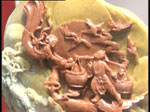
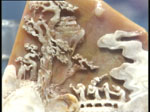


You may also poke into the workshop at the back to appreciate how these fine handicrafts are made.
Mawei port of Fuzhou located at the mouth of Min River is another must-see of the city. A bustling commercial port nowadays, it holds a significant position in Chinese marine history.
Luoxing pagoda is a good starting point for the navigation tour of Mawei.
For almost a thousand years, this tower has been the landmark of China for sailors from all over the world. This area is the birth place of Chinese modern navy. And this huge area of water over there is where Majiang War took place in late Qing Dynasty.
In 1884, Fujian navy of Qing Dynasty put on a fierce fight against the French invaders right here, later known as the Majiang war. Most of the ships engaged in the war were built right here at Mawei shipyard, the first modern shipyard in China.
Fujian marine administration was set up in 1866 and created many firsts in Chinese naval history. Among them, the first steam engine factory of China is still kept intact.
The other workshop based on the same French design was destroyed later, so this one at Mawei is the only one of a kind left in China, probably one of the oldest such factories left in the world.
At its peak, Mawei shipyard hired over 3,000 workers and was the largest shipyard in the Far East. From 1866 to 1907, 40 ships were manufactured here.
It is the birthplace of China's first steam engine ship, and the first flying boat among others. It also owns the largest ship dock in the Fareast at the time.
Another major contribution of the Fujian marine administration was the first modern navy school. The school adopted western courses in English and French, and trained many talents who later created the modern industry of China.
Today's Mawei is the most developed area in Fuzhou in terms of economic growth. What remains unchanged is the old navigation tower - Luoxing pagoda.
It may not sound so convincing to you, but it will really be a huge loss if you don't visit some of the most famous Buddhist temples in Fuzhou. The city is substantially influenced by Buddhism – altogether there are six state-listed key temples.One of them is Yongquan temple at Gushan.
The huge bronze wok is one of the many treasures of the temple. It is over 900 hundred years old, 0.8m deep and 1.67m in diameter, and can feed over 1,000 people at a time.
The cook, a veteran of the temple, is nicknamed Master Kele, referring to his jovial personality. According to Master Kele, the Thousand-people rice is normally cooked during Spring Festival or on other special occasions.
The Blood scripture is one of the most valuable treasures and the pride of the temple. They were all written by devout monks pricking their own fingers. Yongquan temple boasts the largest collection of Buddhist scriptures in Fuzhou.

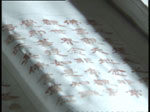
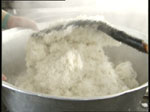



Lunch starts at 11:30 in the temple. Looks like Master Kele’s cooking skill is also appreciated by his fellow monks. There are currently over 100 monks in the temple that was first built in the year of 908 and is the foremost temple in Fuzhou nowadays.
Yongquan temple is located on Drum Hill ten kilometers east of Fuzhou downtown. Aside from the temple, there are many tourist attractions in Drum Hill, for example, the 180 rock carvings of calligraphy from different time periods.
Many of them are from big-name calligraphy artists such as Tsai Xiang in Song Dynasty, Zhu Xi in Ming dynasty.
The fifth largest island in China, Pingtan Island locates some 120 kilometers east of the city proper of Fuzhou.
Occupying an area of 250 square kilometers, Haitan scenic zone is the main attraction in Pingtan known for its individual and unpolluted environment.
The unique scenery was formulated from sea erosion, and is most representative of the sea erosion physiognomy.
Of course you can always enjoy the spectacular sunset and sunrise without sailing out to the ocean.
Pingtan Island consists of altogether 126 islets. There are four bays and 28 beaches in the main island - Haitan, all of which feature gentle slopes and white, fine sand.
Fuzhou may not be the kind of city that will wow you at first sight. But after you get down to it, you’ll find something that’s unforgettable about this lace. Maybe that is why millions of overseas Chinese still call it home.
Editor:Zhang Source:CCTV.com